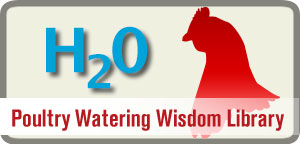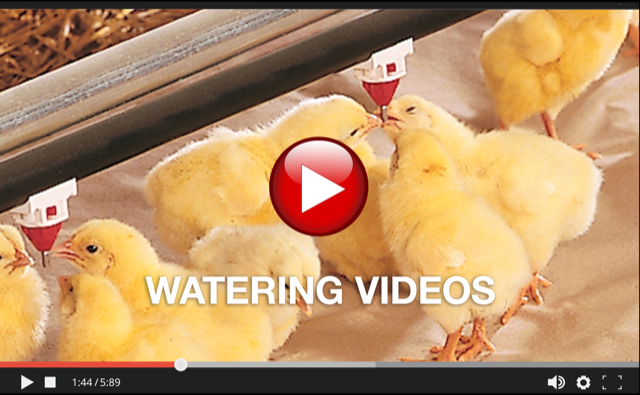Simply, birds drink when they are thirsty. The hormonal and neural mechanisms involved in thirst are complicated and involve baroreceptors sensitive to blood pressure and osmoreceptors that respond to changes in the chemical composition of blood. Thirst represents the interpretation of signals received from receptors that are processed by centers in the brain. Stimulating the bird to drink.
Birds are covered with an insulating layer of feathers and are devoid of sweat glands. Their main method of thermoregulation is loss of body heat by evaporative cooling from respiratory surfaces and to a lesser extent by radiation from the comb and wattles. When flocks are subjected to high ambient temperature, respiratory rate increases to facilitate evaporation of water from the surfaces of the trachea, pharynx and oral cavity. With the change in state from liquid to vapor, latent heat is required resulting in cooling. As water is lost to the atmosphere, changes in blood composition occur stimulating thirst. Extracellular water moves into the vascular system to restore osmoregularity. Excessive and prolonged heat resulting in changes in the composition and the volume of blood stimulate thirst through activation of osmoreceptors and baroreceptors. Resulting in an increase in water intake at progressively higher temperatures.
The kidneys of birds are relatively inefficient consistent with their reptilian ancestry. Glomeruli responsible for filtration are less numerous than in mammals and are smaller and less efficient, placing an additional burden on the neural and hormonal mechanisms that regulate thirst.
With an understanding of factors that influence thirst, it is self-evident that simple rule-of-thumb charts and formulas relating to daily water consumption assuming static flow-rate from a nipple type drinker are simplistic and are frequently inappropriate. Broad recommendations do not take into consideration water spillage and the manner in which birds actually drink. Accordingly, breeders’ manuals and advice provided in university extension advisories should be specific to the model of drinker used with reference to the manufacturer’s suggested settings for water pressure, operational management and maintenance.
Given the factors regulating thirst it is not possible to increase water intake of a flock to stimulate feeding and hence growth rate by simply raising the pressure in a drinker line or installing an excessive number of drinking points.
Ziggity Systems is dedicated to the design and manufacture of watering systems for poultry. Each of the Company products is developed for a specific type of bird and housing system with the objective of maximizing genetic potential to optimize profit.












